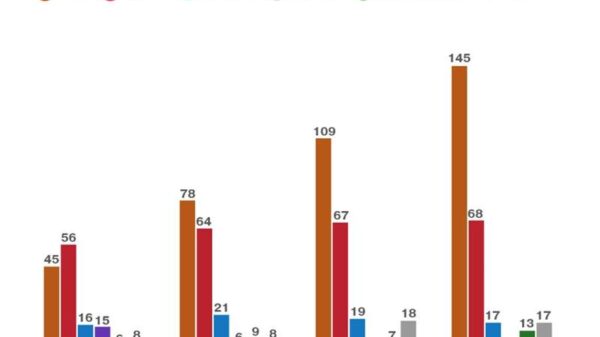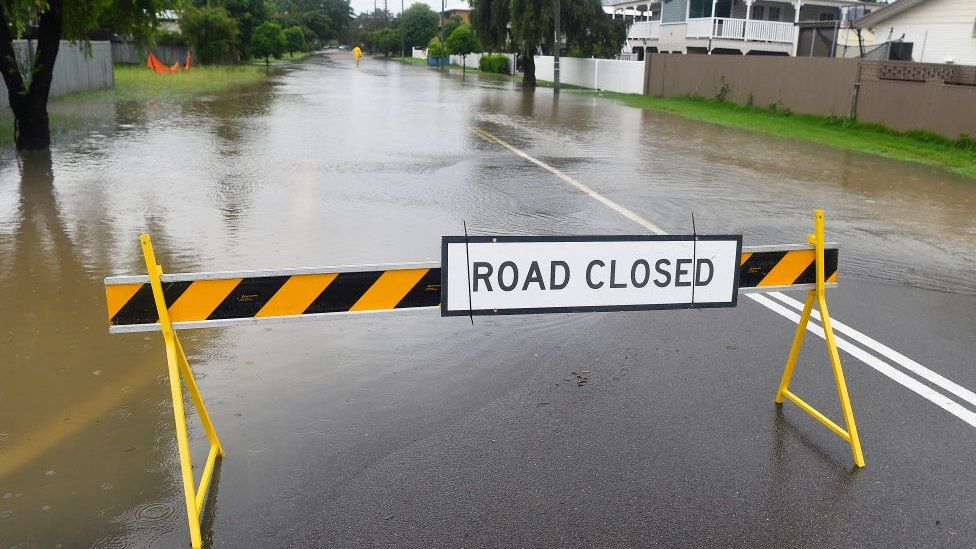Australia’s floods of 2010-11 spread devastation and damage across Queensland, with 33 people losing their lives and causing billions in losses across the state. The floods also damaged 19,000km of roads, including those needed for emergency and delivery vehicles.
It was a stark lesson in the importance of weather-proofing Queensland’s most vulnerable roads, to ensure that future flooding would lead to fewer people being cut off.
Since then, Queensland has been using a process called foamed bitumen stabilisation. This injects small amounts of air and cold water into hot bitumen, the sticky dark substance typically used for road surfaces.
The bitumen then expands and forms a water-resistant layer. The result is a stronger yet flexible road surface or pavement that is better able to withstand flooding.

“This was actually tried and tested on Queensland’s roads during Tropical Cyclone Debbie in 2017,” says Caroline Evans, chair of the climate change and road network resilience committee for the World Road Association (PIARC).
“When the waters receded the pavements were still intact, so they didn’t need to be fully rehabilitated afterwards.”
Foam bitumen stabilisation has also been applied to other roads as part of Queensland’s move to makes its roads more flood-resistant, and is proving more cost-effective than traditional asphalt.
Queensland faces considerable challenges as it has the longest state-controlled road network of any Australian state or territory with over 33,300km of roads. So far it has built 1,000km of foamed bitumen road surfaces and is “continuing to develop foamed bitumen techniques”, according to its transport department.

This is one of many technologies that authorities are testing on streets around the world. From landslide-blocked roads in Nepal, washed-out coastal highways in the US, collapsed bridges in Kenya to melting ice roads in Canada – an increasingly volatile global climate is threatening to disrupt essential transport networks.
Yet it is also inspiring a great deal of innovation.
One of the biggest problems with roads is their vulnerability to high temperatures. Extreme heat can soften pavements, leading to more cracks, buckling and rutting or surface depressions.
The exact effects depend on local conditions, says Refiloe Mokoena, a research engineer at South Africa’s Council for Scientific and Industrial Research (CSIR).
“There are so many variables that determine a road failure and the road can actually fail in many different ways.”

One solution is heat shields. These are special coatings and tiny hollow ceramic particles that lighten the colour of streets and reflect solar radiation.
“Some of these heat-shield pavements could reduce the surface temperature by up to 10°C,” says Ms Evans.
This can also help reduce “heat island” effects, she adds, where cities are much warmer than surrounding regions because airflow can be blocked by buildings and there is often a lack of greenery.
Ahead of the 2020 Olympics, Tokyo trialled solar-blocking paint coating developed by construction firm Nippon Corporation, a member of the Cool Pavement Society. It says that by the end of 2020, solar heat blocking paint had been applied to nearly three million square metres of the country’s road surfaces.
While such coatings might protect the road surface, they could make life more uncomfortable for pedestrians. Research carried out in the US showed that reflective road coatings radiated significant amounts of heat towards pavements.

The cost of doing nothing will be steep. If steps to combat rising temperatures and increased rainfall are not taken, then the bill for repairing and maintaining roads across Africa could reach $183bn by 2100, according to University of Colorado research.
Ms Evans believes that while there is widespread international interest in alternative technologies for roads, the difference between countries is in the level of funding available to invest in the technologies.
One way to keep costs in check would be “looking at targeted sections of vulnerable roads” rather than immediately seeking to upgrade an entire road network, she says. This might include increased preventative maintenance in certain areas – which would be cheaper than after-the-fact repairs.
Expensive, high-tech materials and processes are not always warranted. Roads with little traffic can be constructed out of low-emission materials like soil, and laid by human workers rather than heavily polluting machinery, Ms Mokoena says.

Low-volume roads also present “an opportunity to use recycled and waste materials for construction, which would otherwise be destined for landfills; these are typically associated with lower emissions.”
Alternative materials are particularly important given the shortage of sand, which is commonly used in road construction.
“The use of waste and recycled material will likely present a cheaper locally available alternative material to modify bitumen to resist the distresses associated with… higher temperatures,” says Georges Mturi, a senior research scientist at South Africa’s CSIR.


Recycled tyres have been tested on a road section in Gauteng, South Africa, where the material showed no cracks from heat. According to Mr Mturi, who was involved in the trial, “we are continuing with further construction and testing to also demonstrate the various ways of using waste and recycled materials in road construction.”
Other materials could include recycled plastic and glass. It may not seem obvious that such substances might be able to withstand high temperatures and heavy traffic, but “depending on the form the material comes in, it is something that can be used,” says Refiloe Mokoena.
Further research may be needed to find alternatives to bitumen and plastic which, after all, are both oil by-products.
In addition there are some “low-lying fruits” that can be taken advantage of, says Ms Mokoena.
These include regularly maintaining storm water infrastructure and so improving drainage, and planting trees alongside roads to shade pavements.
While many potential innovations for improving road resilience are still in the testing and design stage, Ms Mokoena points out that many other technologies exist and have been trialled. What is needed now is the push from industry and governments to make them more widespread.

























